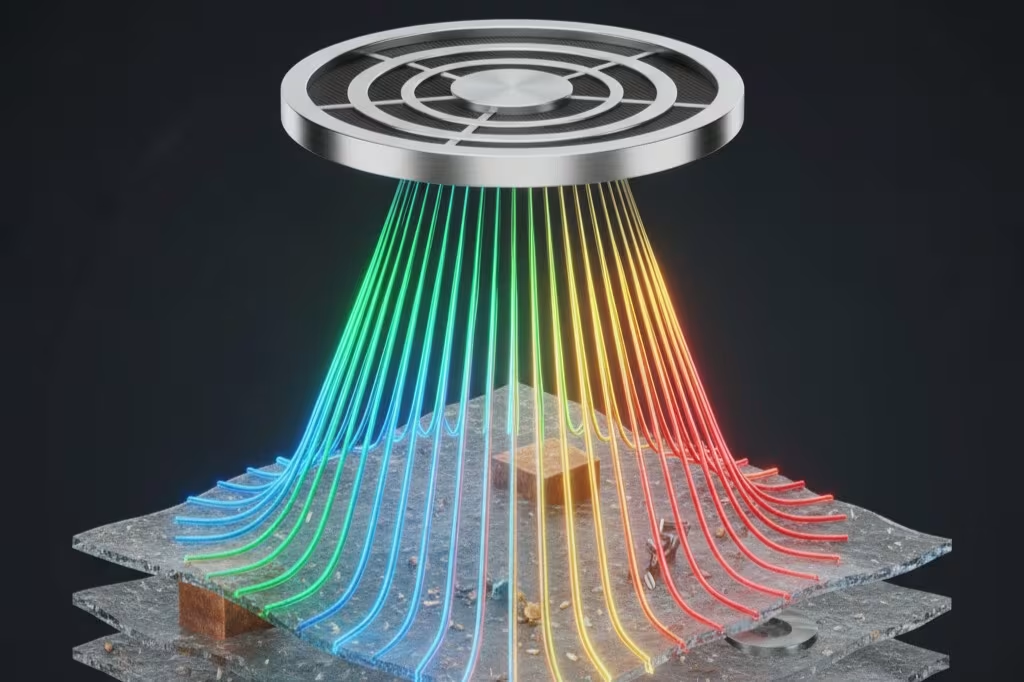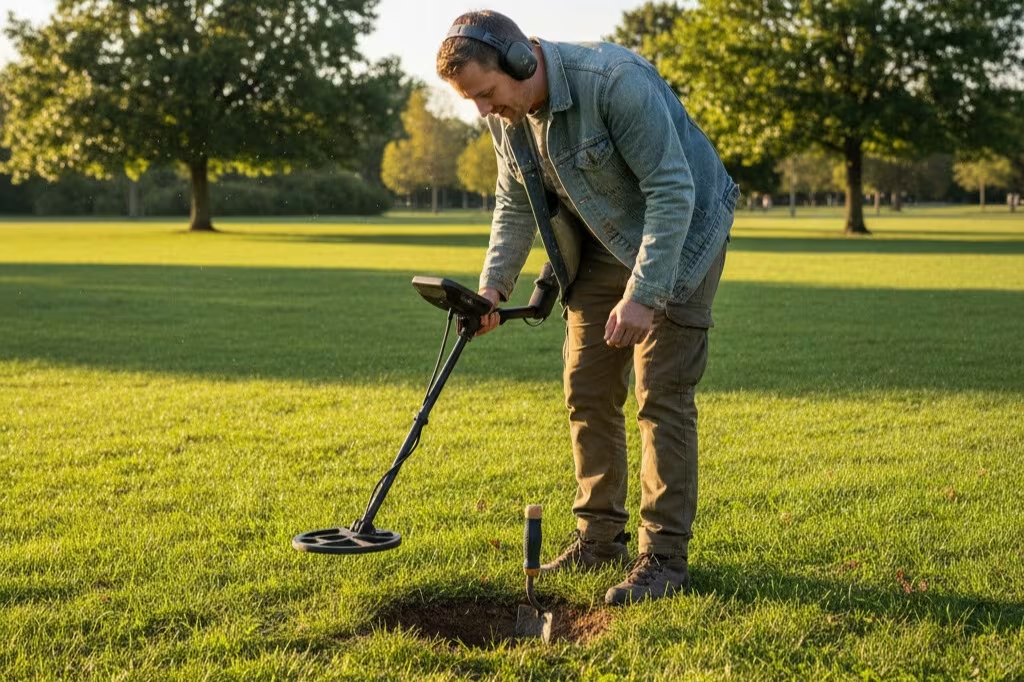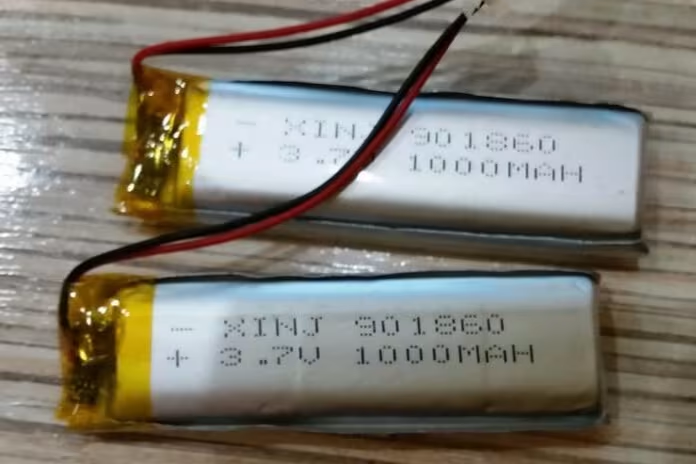Here’s the $900 question that keeps treasure hunters up at night: will that budget detector actually find treasure? Or am I just throwing money away on a fancy beeping stick? If you’re trying to figure out whether cheap metal detectors are worth it, you’re not alone. This guide will give you the honest answer.
I’ve watched dozens of people face this same choice. My neighbor Sarah bought a $90 detector last spring. She used it twice in her local park, then stuffed it in her garage next to the unused exercise bike. When I asked why she quit, her answer surprised me: “It wouldn’t stop beeping. I dug up seventeen bottle caps and three rusty nails before I gave up.”
Here’s what nobody tells you upfront: beginners rarely quit because their detector doesn’t beep. They quit because it beeps on everything. This “Beginner Frustration Factor” is the real performance gap in any cheap vs expensive metal detectors comparison. Understanding it will save you hundreds of dollars and countless hours of disappointment.
I’ve reviewed tons of testing data from independent sources. That includes an 80-hour test that checked 11 detectors across 13 different standards.[1] The answer isn’t simple “yes” or “no.” Budget detectors work at 80-90% effectiveness in perfect conditions. But here’s the catch: perfect conditions barely exist in the real world. In tough spots like mineralized soil or trashy parks, expensive detectors work 100-200% better. The real question isn’t whether cheap detectors work. It’s whether they’ll work where you actually hunt.
Cheap Metal Detector Depth Test Results: How Good Are Budget Detectors Really?
Let me cut through the marketing noise with real numbers from actual tests. Family Handyman’s testing team spent 80 hours putting 11 metal detectors through tests. They collected over 600 data points. What they found was interesting: budget models from good brands like Garrett and Bounty Hunter found 100% of targets in controlled depth tests.
Sounds great, right? Here’s where things get tricky.
$100 Metal Detector Performance: Real-World Discrimination Test Results
Those same budget detectors only got it right 83-92% of the time when identifying what they found. They correctly ID’d about nine out of ten targets. That missing 8-17% is the difference between digging coins and digging junk. In a typical park hunt where you get 50 signals, that’s 4-8 wasted holes. This is the real-world $100 metal detector performance that matters, not what the box says.
Air Test vs Ground Test: Why Cheap Metal Detector Depth Claims Mislead
The real killer isn’t depth. It’s where you’re hunting. Tests in the UK used a garden with 15+ year buried targets. What they learned matches what experienced hunters already know: ground conditions matter more than your detector’s specs. A budget detector might claim 13 inches of depth in an “air test” (waving a coin in front of the coil). But it might struggle to find that same coin at 7 inches once it’s buried in real soil.
In fact, ground minerals cut depth by 30-70% compared to those misleading air tests that makers love to show.[2] Think about your car’s highway mileage versus what you actually get in traffic. The real-world number is what counts. And budget detectors take a bigger hit in tough conditions.
I watched a friend with a nice Minelab Equinox find three silver coins in a heavily-hunted park. I’d covered the same park with my entry-level Garrett just a week before. Same spot, totally different results. The expensive detector’s multi-frequency tech and better target separation let it “see through” the noise. My single-frequency machine just heard it all as one confusing beep.
Here’s the hard truth: in clean soil with shallow targets (4-6 inches), budget detectors do fine. But clean soil with shallow, isolated targets is getting rare. Most public parks have been hunted for decades. The easy finds are gone. What’s left lies deeper. It’s often hidden by trash. It’s in soil with varying mineral levels. This is where that $900 price gap actually buys you something real.
Are Cheap Metal Detectors Worth It? How Soil Type Determines Performance

I learned this lesson the hard way on a road trip. My mid-range detector worked great in the sandy soil back home. But when I visited my cousin in Georgia and tried hunting his yard, the thing went crazy. Constant false signals. Terrible depth. Pure frustration. Welcome to red clay country. This is why asking “are cheap metal detectors worth it” depends totally on where you’re hunting.
Soil is the great equalizer. Or more accurately, the great separator.[3] It matters more than any other factor except your skill level. It’s the main reason that cheap detector performance varies so much. This is key info for anyone reading budget detector reviews and wondering if they’ll work in their area.
Best Metal Detectors Under $200 for Different Soil Types
Let me break down the soil types you’ll run into:
Clean soil (low iron content, common in sandy areas and some parks) lets budget detectors work close to what they promise. If you’re lucky enough to hunt only in these spots, one of the best metal detectors under $200 might serve you well for years. These are the conditions where cheap detectors can truly compete with expensive ones.
Medium mineral soil (found across much of the US) cuts budget detector depth by 30-50%. That is, unless they have good ground balance features. This is where you start seeing the value shift toward mid-range models. The best metal detectors under 100 dollars struggle here. Slightly pricier options handle it better.
Heavy mineral soil (red clay, volcanic soil, black sand beaches) makes budget detectors with basic ground balance almost useless. I’m not joking. I’ve seen $100 detectors stop working in Virginia red clay that mid-range models handle fine with manual adjustments. This answers “do you need an expensive metal detector” with a big yes if this is your typical hunting ground.
Do You Need an Expensive Metal Detector for Beach Hunting?

Saltwater beaches deserve special mention. They’re the ultimate budget-detector killer.[4] Single-frequency VLF detectors (which means most budget models) are basically unusable in wet sand and surf. The salty water creates interference that makes constant false signals. Tests showed budget detectors losing 50-70% of their depth in wet saltwater sand versus dry conditions. If you plan to hunt beaches seriously, multi-frequency tech isn’t optional. It’s required. And that usually means spending at least $300-400.
Before you buy any detector, look up your local soil type. Your state geology website can help. Or just ask experienced hunters in your area. A detector that works great in Michigan might be useless in Arizona. It’s not that the machine is “bad.” It’s just physics.
Low Cost Metal Detector Performance in Trashy Areas
The other big factor that separates budget from premium is target masking in trashy areas.[6] Picture a quarter lying next to a nail at 6 inches deep. A budget detector with slower speed and basic ID might read them as one target. It gives you a confusing signal. A premium detector with faster processing and better separation can pick out the quarter’s signal from the nail’s. In heavily-hunted public spaces where old finds sit buried among trash, this ability makes the difference between good hunts and pure frustration.
Best Affordable Metal Detectors for Beginners: The $300-600 Sweet Spot
Here’s where the metal detecting world had a real game-changer. It changed everything about the budget versus premium debate. It transformed the market for cheap but good detectors.
Entry Level Metal Detector Reviews: Multi-Frequency Technology Changes Everything

Until around 2017, multi-frequency tech was only in detectors costing $2,000 or more. Then Minelab dropped their Multi-IQ system in the Equinox series. They brought multi-frequency detection to the $300-$700 range. Nokta followed with their own multi-frequency models. Suddenly, features that would’ve cost $1,500+ just five years earlier became available at a third of the price. This totally changed what we mean by entry level detector reviews.
This tech shift changed the value curve big time. Today’s $300 detector matches $1,500 models from 5-7 years ago in core features. The ultra-premium $1,500+ detectors still have advantages. Mainly in speed, waterproof ratings, and custom options. But the performance gap isn’t what it used to be.
Affordable Metal Detectors That Work: Best Value Under $600
I’ll be honest: the $300-600 range is where I tell most people to shop if they’re serious about the hobby. Models like the Minelab Vanquish 540 ($300), Nokta Simplex+ ($330), or Garrett Apex ($350) give you 85-95% of premium detector power at 30-50% of the cost.[5] They include real multi-frequency tech. Good ground balancing. Decent waterproofing. And ID circuits that work well enough to prevent most of that “digging junk all day” pain. These are the best value detectors for anyone planning regular hunts.
The gains above $700-800 start showing less return for most hunters. Sure, a $1,200 Minelab Equinox 900 beats a $350 Apex in side-by-side tests. But is it $850 better? Only if you’re hunting in really tough conditions. Or if you need special features like deep-dive waterproofing or the ability to fine-tune dozens of settings.
Metal Detector Price Comparison: When Premium Features Don’t Matter

My friend Jake is an engineer who treats every hobby like a research project. He bought a top-end CTX 3030 for about $2,500. It’s an amazing machine. He finds great stuff. But here’s what he told me after his first year: he found just as many good targets his first six months with a borrowed $350 Nokta Simplex. The expensive detector gave him more depth, better target ID, and endless adjustment options. What it didn’t give him was more access to fresh hunting sites or more hours in the field. Those are the factors that actually matter most.
The used market is worth looking at too. A 2-3 year old Equinox 800 for $600-700 or a Garrett AT Pro for $350-400 gives you way more power than new $300 budget detectors. Key things to check: battery health (replacements cost $100-200), warranty status, and buy from good detector dealers rather than Craigslist when you can. The Garrett AT series holds value really well. These tough machines keep 60-70% of their value after 3-5 years and keep working great.
Budget Metal Detector Buying Guide: What You Should Actually Buy
Enough with specs and percentages. Let’s talk about what you should actually buy based on where you are in the hobby.
Beginner Metal Detector Under $100-200: Best for Testing the Waters
Start at $200-300 if you’re not sure about sticking with it. You’ll learn the basics without major money risk. Just know you’ll probably upgrade within 12-18 months if you catch the bug. This path works for casual hunters, parents buying for kids, or anyone just testing the waters. Models like the Garrett Ace series or Bounty Hunter Tracker IV fit here. These beginner detectors under $100-200 will teach you what you need to know without breaking the bank.
Best Metal Detectors Under $600 for Committed Beginners
Jump to $300-600 if you know you’ll stick with it long-term. This range gets you tech you won’t outgrow quickly. You’re buying real multi-frequency power, good waterproofing, and ID that works in real-world conditions. This is the smart buy for anyone who plans to hunt often. The Minelab Vanquish series, Nokta Simplex Ultra, and Garrett Apex rule this range. These are the best cheap detectors for beginners who know they’re in it for the long haul.
When You Need Premium: Specialized Metal Detecting Applications
Spend $700+ only for special cases. Serious saltwater beach hunters, gold hunters, or deep relic hunters in heavy mineral soil need premium gear from the start. Cheaper options just can’t handle the physics. If you’re after deep Civil War relics in Virginia red clay or hunting the surf zone regularly, you need better tech.
Think about ultra-premium ($1,500+) only if you’re a serious fan. Someone who gets advanced features and hunts in spots where small gains mean way more finds. These detectors serve pros and devoted hobbyists who’ve outgrown mid-range limits.
The honest answer to “do cheap detectors work?” is: it depends. They work fine for beginners in good conditions. But they fail in typical real-world spots where mineral soil, trash, and target depth test their limits.
One last thing: remember that your skill and site choice matter more than gear. Within reasonable limits, of course.[7] Forum old-timers with decades of experience say this all the time. A skilled hunter with a $300 Vanquish who gets permissions for fresh sites will beat a newbie with a $2,000 CTX working heavily-hunted public parks. But this breaks down at extreme gaps. No amount of skill makes a $100 single-frequency detector work at saltwater beaches. The physics just don’t allow it.
Cheap Metal Detector vs Expensive: The Bottom Line on What You Actually Need
After looking at all the test data, real-world reports, and honest user stories from this comparison, here’s my straight answer: cheap detectors work in specific, good conditions. But the $900 price gap buys you freedom from frustration and access to tough spots where cheaper machines fail. Whether cheap metal detectors are worth it depends totally on your hunting spots and how serious you are.
The sweet spot—best bang for your buck—sits in the $300-600 mid-range. That’s where modern multi-frequency tech meets smart design. These best value detectors give you 85-95% of premium power while costing 30-50% as much. For most people getting into metal detecting as a serious hobby, this is the best choice.
Sarah finally asked me for detector advice six months after her budget model went into garage storage. She bought a $350 Nokta Simplex+. She hunted the same park where she’d given up before. She found her first silver coin within an hour. Same hunter, same spot. Different tool designed to filter signal from noise rather than beeping at everything metal.
That’s what the price gap buys in this comparison: the ability to actually enjoy treasure hunting instead of trash digging. Whether you pick one of the best metal detectors under 100 dollars to learn on or invest in cheap detectors that work in your specific conditions, match your buy to your actual needs. Choose wisely, and happy hunting.
References
- Family Handyman – “Best Metal Detectors” https://www.familyhandyman.com
- “Metal Detector Air Test vs Ground Test” https://metaldetectingforum.com/index.php?threads/ground-vs-air-test-true-or-false.97035/
- MetalDetector.com – “What Is Ground Mineralization in Metal Detecting?” https://www.metaldetector.com/blogs/new_blog/what-is-ground-mineralization
- Friendly Metal Detecting Forum – “Beach Hunting on a Budget” https://metaldetectingforum.com/index.php?threads/beach-hunting-on-a-budget.105271/
- YouTube – “Best Budget Metal Detector (Best Value) Of 2024: 250 Dollar Price Point” https://www.youtube.com/watch?v=u2BeMNE8QHc
- Friendly Metal Detecting Forum – “How do you deal with super trashy areas?” https://metaldetectingforum.com/index.php?threads/how-do-you-deal-with-super-trashy-areas.264746/
- YourBestDigs – Metal detector testing comparison https://www.yourbestdigs.com/reviews/best-metal-detector/
- Kellyco Detectors – “The Ultimate 2024 Guide to Choosing the Right Metal Detector for Beginners” https://kellycodetectors.com/blog/the-ultimate-2024-guide-to-choosing-the-right-metal-detector-for-beginners-top-10-metal-detectors-/
- TreasureNet forums – veteran detectorist discussions on skill vs equipment value
- Friendly Metal Detecting Forum – “Why do people quit this hobby?” https://metaldetectingforum.com/index.php?threads/why-do-people-quit-this-hobby.115449/page-2

My name is Paul and I am the founder of Detector For Metal, a dedicated resource for metal detecting enthusiasts seeking to uncover historical treasures and connect with the past using the latest technology. As a stay-at-home dad and family man, I’ve found metal detecting to be the perfect hobby that combines family adventure with historical learnings for the whole family.
As a father, I’m deeply committed to passing on this hobby to the next generation of detectorists, starting with my own children. I share advice on everything from metal detecting with kids to exploring the top 10 metal detecting sites you never thought about. My methodical approach to the hobby goes beyond the thrill of discovery—it’s about creating family traditions while preserving history and sharing the stories of those who came before us.


